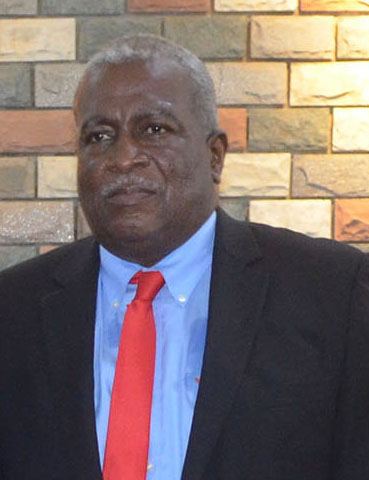The provision of $8.4 billion in the 2021 budget to be spent on Guyana’s power generating sector will pave the way for the Irfaan Ali-led government to achieve its objective for affordable, stable and reliable energy throughout the country, Prime Minister Mark Phillips said on Monday as he made his budget presentation.
He noted that the strategic vision for the country’s energy sector incorporates the provision of affordable, stable and reliable energy for households and businesses with an energy mix that includes hydropower, natural gas, solar, and wind. With these energy generation plants on stream, he said, this will lead to more than 400 megawatts of newly installed capacity over the next five years and a reduction in the cost of energy by at least fifty per cent.
The PPP/C government, he added, is aiming to implement measures that will transform and boost the country’s energy sector. As part of its plan, he announced that the administration is seeking to generate 200 megawatts of power from natural gas, but in the interim, they are seeking to have the Amaila Falls hydropower project completed.
The Prime Minister added that government is working “assiduously” to implement the necessary measures that will result in an improved standard of living for the people through the generation and provision of sufficient, stable and reliable power, while disclosing that $240 million has been budgeted for the Sustainable Energy Programme, $628.8 million for the Renewable Energy Improvement Power System Project, $750 million for the Energy Matrix Diversification Program-me, $500 million for the Solar System Project, and $125 million for the small hydropower projects.
He told the house that the Guyana Energy Agency has been allocated $1b to undertake its five-year Strategic Plan. He noted that the agency will aid in the advancement of solar and wind systems for off-grid areas, support the expansion of the hinterland electrification programme, replace and upgrade solar photo voltaic (PV) systems in the hinterland, and micro grids for large hinterland areas.
As he spoke of these developments, he was heckled by Opposition Member Ganesh Mahipaul who pronounced his speech as boring.
Nonetheless, Phillips soldiered on, telling the house that an estimated total of $3.1 billion has been allocated to power companies across Guyana in a bid to improve electricity supply and maintenance of power plants. He informed that $172.5 million has been budgeted for the Lethem Power Company, $490 million for Kwakwani Utilities Inc, $2.3 billion for LINMINE, $30 million for Mabaruma Power Company, $50 million for Mahdia Power and Light, $10 million for Moruca Power and Light, $15 million for Matthews Ridge Power and Light, and $50 million for Port Kaituma Power and Light.
As he sought to draw the House’s attention to the 2021 plans for the Guyana Power and Light (GPL), Mahipaul shouted across the floor that since the PPP/C took office there has been an increase in power interruptions.
But Phillips ignored the comment and stuck to his script, noting that while GPL will be focusing on policies and strategies to improve power generation, the government will embark on a phased transition from Automated Meter Reading (AMR) technology to Automated Metering Infrastructure (AMI) technology in order to facilitate on-demand and scheduled remote retrieval of meter readings.
This move, he noted, will reduce meter access challenges, improve voltage-level monitoring at customers’ premises, detect unauthorised interference of electric service at the point of the meter, and facilitate remote disconnection or reconnection of electric services.
The prime minister also announced that $1.8 billion has been allocated to the Power Utility Upgrade Programme, which is aimed at improving the performance of the power distribution network in terms of reliability, contribute towards improving Guyana’s “doing business” conditions by making it easier to obtain electricity through better power network performance, and aid in achieving an estimated energy saving of 80 gigawatt hours by 2022, among other benefits. The programme will also contribute positively to reducing emissions of 22,000 Total Carbon Dioxide (TCO2) by 2022. Phillips announcement was greeted by a round of applause from his colleagues as this achievement falls in line with the goals of Sustainable Development Goal (SDG) 13 which requires urgent action to combat climate change and its impacts.
Further, he stated that an estimated $202.5 million has been allocated to the Hinterland Electrification Company Inc (HECI) which, since its establishment in 2004, has been able to provide electricity to close to 80% of hinterland communities.
“As part of HECI’s vision for the next five years, 25,000 solar home systems (rated at 100W each) will be installed in over 200 communities between 2021 and 2022. Each system will provide the average household with dusk to dawn lighting, power for the charging of cell phones and laptops, and operating audio equipment for information and entertainment,” the PM announced to loud applause.
For this year he noted that the HECI is looking to install five solar PV powered micro-grid systems to service hinterland communities. The aim is to power 50 Indigenous and off-grid communities by 2025.
Phillips said that both males and females in the communities will be trained to execute preventative and emergency maintenance activities.






